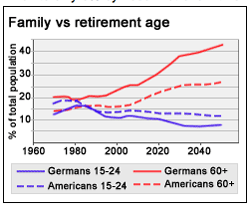December 6, 2011
Handing Out Triple A's like Candy
Bethany McLean is unique in that she can break down all of the complexity of the current financial crisis in terms most people can understand, (The Interview Show's folksy presentation helps too, he doesn't pretend to have any expertise in the subject). She's talking about her book, All the Devils Are Here.
(I recommend an inspiring bio by Bethany McLean here.)
The C-Span interview is here.
"The ultimate form of corruption is not someone explicitly doing someone else a favor but the form of corruption that happens when everybody already thinks the same way."
Her co-author Joe Nocera's interview on Democracy Now! is here.
Essentially, she paints a tale of the proverbial road to hell initially being paved with good intentions, then the bad ones stealthily took over. All the devils are here, and everyone from top to bottom, everyone including ourselves, we who had heard of the availability of unrealistic mortgages in the years shortly preceding 2008 going down without freaking out in the street with a megaphone, we, all of us are not exempt from the list. Listening to this, I wonder how we can possibly control the devolution or corruption of a given rule set, especially the ones grinding gears in the mist of this epic story.
Time 18:06 What happened to the rating agencies?
"It's kind of a tragic story by the way because the rating agencies are the little grunts of wall street. They were the people were those responsible for looking at debt, debt of a company, debt of a country, and saying: what are the chances of this debt being paid in full and on time? And for a lot of years, they rated cop orate debt or the debt of a country, they didn't do this complex stuff called structured finance which was what mortgage backed securities are, but they slowing and surely started doing this in part with some prodding by the government?
Over time the culture of the rating agencies became corrupted where the analysis was no longer first and foremost and instead they wanted to keep these rich money flows coming in, rating this stuff triple A..."
Here is another good summary from another angle of what has happened and what is still unraveling by a writer that goes by the pen name Spengler, for Asia Times, The Monster and the Sausages:
There is nothing complicated about finance. It is based on old people lending to young people. Young people invest in homes and businesses; aging people save to acquire assets on which to retire. The new generation supports the old one, and retirement systems simply apportion rights to income between the generations. Never before in human history, though, has a new generation simply failed to appear.As the above chart makes clear, America's population profile is far more benign than Germany's, but it is aging nonetheless. There simply aren't enough young people in America to borrow money from Europe's and Japan's aging savers.
The world kept shipping capital to the United States over the past 10 years, however, because it had nowhere else to go. The financial markets, in turn, found ways to persuade Americans to borrow more and more money. If there weren't enough young Americans to borrow money on a sound basis, the banks arranged for a smaller number of Americans to borrow more money on an unsound basis. That is why subprime, interest-only, no-money-down and other mortgages waxed great in bank portfolios.
As l read and listened, the thought of mapping this story over our art world took hold. The idea of art as investment is commonplace in our art world. Is there any way that it can go wrong? Joe Nocera centers his blame on Alan Greenspan and McLean says that the fault lies in human nature. Our art world is a vast unregulated market, a veritable Wild West. After the bubble burst in the stock market many years ago, money went into the housing market, and after that burst, the smart money went into the art world. Before this migration, the art world was a broader delta of markets, and after that the delta dried up and consolidated into fewer select streams of surer bets. Currently, the art market is going strong but only for the few. The smartest art investment money didn't collect just anything, but within fewer narrowly defined networks who hold the promise to corner the market on art that would have a good return on investment. We too have our own speculative traders of art where demand exceeds the supply, there are linkages of mutual interests who naturally organize themselves in order to establish and exploit perceived value of art.
What if rating agencies correlates with art world critics? Over time the culture of the rating agencies became corrupted, where the analysis was no longer the first and foremost. The reality of the decline or demise of art criticism is widely held in the art world today. Are we blowing a bubble in our own art world and is this the kind of bubble that can pop? Or is the horizon of true value for art too far distant in the future to compel a burst in our time?
UPDATE: One last link on an article in the Daily Beastby Blake Gopnik and snip:
NEW MONEY SKEWS THE MARKETUPDATE 2: Check out this paragraph in an article by Jerry Saltz in ArtNet Adam LindemannAS money stacks up in the BRIC countries (Brazil, Russia, India, and China), their oligarchs are buying into the wealthy Western mainstream by forking out for its art, the way their poorer compatriots are buying into skinny jeans and Lady Gaga. Broad, a billionaire himself, says that for these new buyers ?it seems money is no object.? It has come to the point where such ?artigarchs? are pricing the normally rich out of the game. One veteran collector from the mid-Atlantic region says that he used to be able to buy a Gerhard Richter painting for ?six figures, or in the low sevens.? But now, with so much new money pouring into that market (the Russians are crazy for Richter), you?d be lucky to pay 10 times such amounts. ?I?m finding that the art that I love I can no longer afford, and the art I can afford I don?t know if I love.?
One colleague of his from New York explains that to get a new work by a popular artist such as Jeff Koons even most billionaires have to wait in line and jump through dealers? hoops. Anyone out of time or out of favor?or just new to the whole system?will have to head to the auctions and spend whatever it takes. Doubling down on a piece others also want is about ?a normal mammal need for success in a competitive environment,? the collector says, and dares any of his peers to deny it. ?Eli Broad wants to get it ahead of [Fran?ois] Pinault who wants to get it ahead of [Bernard] Arnault,? he says, rattling off the names of some of art?s megabuyers.
THE PRINCE OF THE ONE PERCENT:
It looks like the art world has entered an ugly finger-pointing period. Call it the Shoot the Wounded Phase: players at the top are starting to accuse each other of being craven, cronyistic bad actors. Everyone knows something bad is brewing, that some end or explosion is imminent amid the obscene prices, profligate spending, celebrity-artist worship, obnoxious behavior of the rich and art as entertainment. People are showing up to say, ?It wasn?t me. It was him! It was her! It was them!?
Now that's a lash of the bull whip dipped in gasoline lit on fire.
But doesn't this feel the same as it did when people were talking about those impossible loans (I pluck an example from memory) for $300,000 houses made over the phone with no credit, no money down back in 2006?
Saltz goes on:
A few days after Lindemann?s column came out, the megamogul supercollector Charles Saatchi stepped into the arena, publishing an article in the Guardian. ?Being an art buyer these days is comprehensively and indisputably vulgar . . . the sport of the Eurotrashy, Hedge-fundy Hamptonites; of trendy oligarchs and oiligarchs; and of art dealers with masturbatory levels of self-regard.? Saatchi goes all out in his attack of the ?stupendously rich,? saying they don?t actually ?enjoy looking at art? and instead ?enjoy having easily recognized, big-brand name pictures, bought ostentatiously in auction rooms at eye-catching prices, to decorate their several homes, floating and otherwise, in an instant demonstration of drop-dead coolth and wealth. Their pleasure is to be found in having their lovely friends measuring the weight of their baubles, and being awestruck.? A much better writer, collector and thinker than Lindemann, and far more honest, Saatchi gets a lot right about ?the success of the ?ber art dealers [being] based upon the mystical power that art now holds over the super-rich.? But he never turns his grand-inquisitor beam on himself, or explains how, somewhere along the line, he went off-track and lost his eye. He himself originated, and has long been the top player in, this terrible business. Good writing aside, it may be that this multimillionaire is a little upset that he?s being displaced by multibillionaires.

(Source.)

Leave a comment